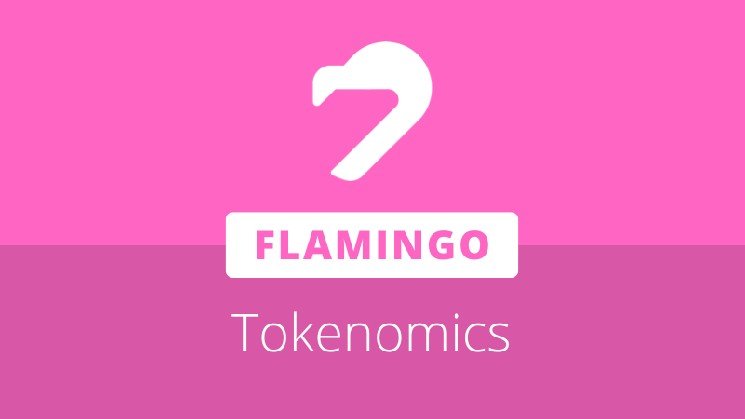Flamingo Finance has revised its FLM tokenomics documentation to align with the recent launch of FLOCKS, the platform’s dividend-bearing token. The update introduces deflationary elements to Flamingo’s existing inflationary minting structure, including a new buyback-and-burn initiative and the burning of FLM tokens as part of the FLOCKS minting process.
Currently, Flamingo users receive newly minted FLM tokens for providing liquidity and holding FLOCKS, which represents a stake in the platform’s revenue-generating activities. While this system maintains an inflationary structure, Flamingo noted that the rate of inflation is decelerating over time.
FLOCKS however integrates a direct burn mechanism—each token minted requires burning one FLM. This has already removed 109.9 million FLM from circulation, equivalent to over one year of current FLM minting emissions. The effect has reduced FLM’s total hard cap from 1 billion to 700 million, with all tokens expected to be minted and in circulation by the end of 2039.
FLOCKS holders receive a share of platform revenue, distributed in assets including FLM, bNEO, GAS, FUSD, fWETH, fWBTC, fUSDT, and fBNB.
Beginning this month, Flamingo will also conduct buybacks to further reduce circulating FLM. Moving forward, the total and circulating supply of FLM will now be determined by the formula: assets minted minus assets burned.
In its early years, FLM experienced high inflation. In October 2020, the annual inflation rate was 100% as the total circulating supply was minted within a single month. That figure has consistently declined. As of April 15, FLM’s monthly inflation rate is 0.68%. This will fall to 0.32% by January 2026, continuing to decrease monthly until January 2035. At that point, it will stabilize at 0.46% annually until minting concludes in 2039.
The updated tokenomics model can be reviewed in detail via Flamingo’s official GitBook documentation below:
https://flamingo-1.gitbook.io/user-guide/flm-tokenomics
Read the full article here










